
Highlights
- Tactics are crucial in soccer, and understanding formations and positions is key to navigating the game successfully.
- There are a plethora of positions, including goalkeepers, who are the last line of defence, and they must save shots, catch the ball, punch it away, kick accurately, and maintain concentration.
- GIVEMESPORT have gone through everything you need to know about positions in soccer to improve your knowledge.
Like any great sport, soccer relies upon the passion of players and fans on game day to bring a real sense of occasion. However, it takes more than just human spirit to get across the line when it counts.
This is where tactics come into play. With 11 players on the pitch for each team, managers and coaching staff will look to analyse every position to try and work out how to best navigate a path to success. It’s important to understand how they work. With that in mind, GIVEMESPORT has written up a guide to soccer positions and formations for you to enjoy below.
Positions map
List of position abbreviations
|
List of position abbreviations |
|
|---|---|
|
Position Name |
Position Abbreviation |
|
Goalkeeper |
GK |
|
Right-back |
RB |
|
Right Wing-back |
RWB |
|
Left-back |
LB |
|
Left Wing-back |
LWB |
|
Sweeper |
SW |
|
Center back |
CB |
|
Central Defensive Midfield |
CDM |
|
Central Midfield |
CM |
|
Central Attacking Midfield |
CAM |
|
Right Midfield |
RM |
|
Right Wing |
RW |
|
Second Striker |
SS |
|
Centre-forward |
CF |
|
Striker |
ST |
|
Left Midfield |
LM |
|
Left Wing |
LW |
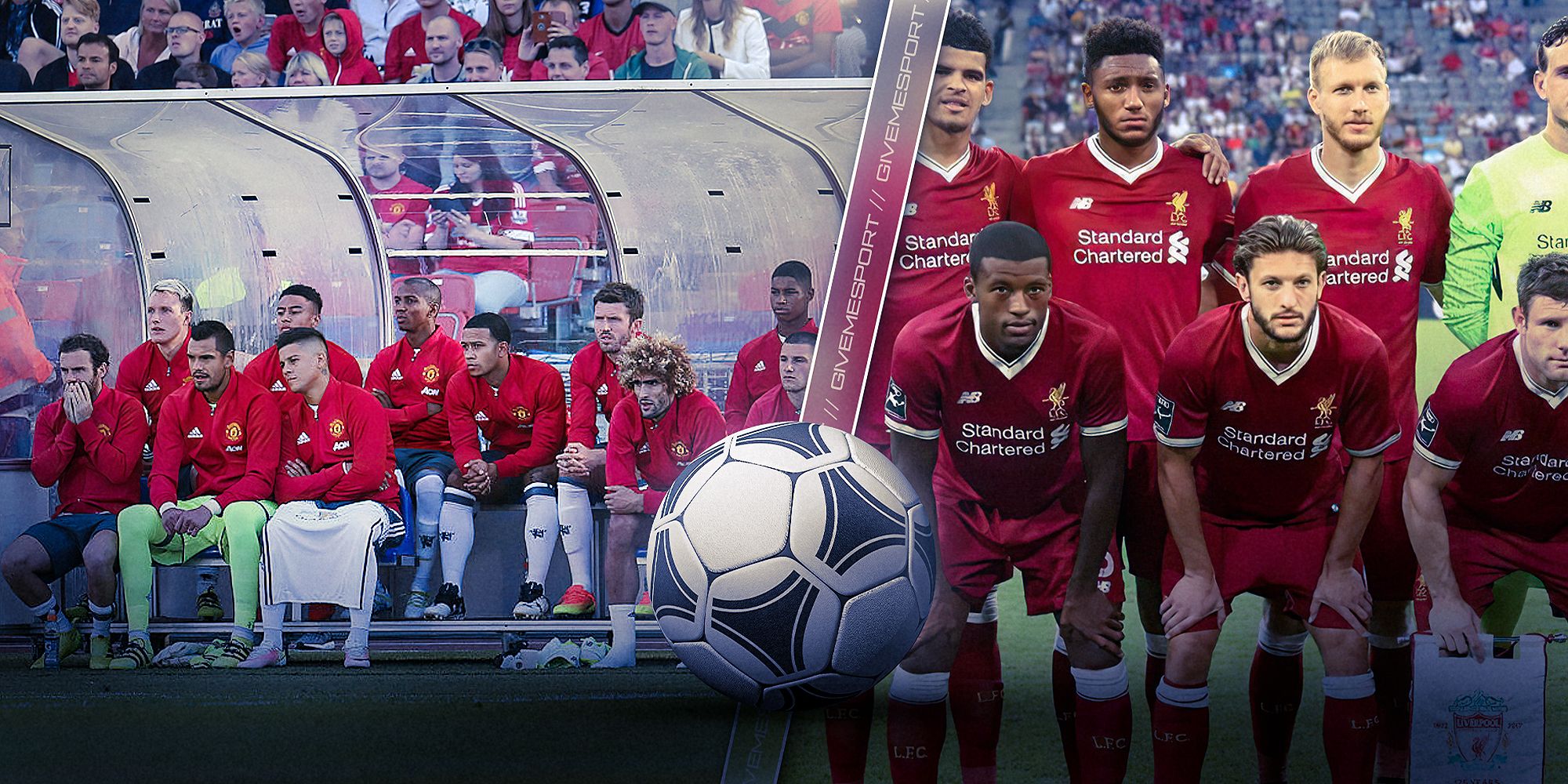
Number of soccer players explained: Substitutions, discipline and more
Soccer has distinct rules when deciding who can play on the pitch at one time.
Breakdown of each position
Goalkeeper (GK)
Alternative names: Goalie, Shot-stopper, ‘Keeper, Number One
Description
- The goalkeeper wants to stop the other team from scoring by any means,
- Requires the most unique set of skills on a pitch.
- They can only use their hands in the area – not outside of the box.
Key Skills
- Saving – The most important skill for any ‘keeper to have is their ability to save shots, this requires agility and timing to dive at the right moment, and strength to push or tip powerful shots to safety.
- Catching – They must also be able to catch the ball, this might sound simple but when crosses or shots come in crowded areas, goalies must hold their nerve to claim the ball under the pressure of opposition players.
- Punching – Sometimes, if it’s too risky or difficult to try to catch the ball, it’s better to punch it away to safety.
- Kicking – In the modern game, goalkeepers must be comfortable with the ball at their feet so that they can find teammates when kicking or punting the ball long, medium or short distances from goal-kicks or in open play.
- Concentration – As goalkeepers aren’t involved in play all the time, they must maintain concentration and be ready to spring into action at any moment. This can include racing off their line to clear through balls or being alert to long-distance shots that could catch them by surprise.
Examples of best goalkeepers
Some of the best examples of modern players include the likes of Thibaut Courtois, Emiliano Martinez, and Jan Oblak – who are remarkable shoot-stoppers. While others such as Alisson Becker and Ederson are also exceptional with the ball at their feet on top of possessing the more traditional skills. Oliver Kahn and Iker Casillas are names of the prior generation, revered for their goalkeeping skills too. Every goalkeeper exacerbated confidence in their backline, who always trusted them to make the important saves.
Positional subtypes
As alluded to before, some goalkeepers are better known for their ability to make brilliant saves, while others are happier to get involved in possession. Most current goalkeepers are also expected to play a Sweeper Keeper role, which involves coming off their line, often way outside of the penalty box, to clear the ball to safety or regain possession when the opposition attack tries to get in behind the defence.
Fullback (FB)
Alternative names: Right-Back, Right Fullback, Left-Back, Left Fullback
Description
- Main job is to defend and mark the opposition winger.
- Often asked to attack down the flanks to provide support in the final third.
- They can be either left-footed or right-footed, with it often depending on which side they are playing on.
- Must be capable of crossing the ball into the box consistently.
Key Skills
- Tackling – As a defender, a fullback must be adept at winning the ball back in duels when being run at by attacking players.
- Positioning – This is key off the ball as fullbacks need to make sure attacking players aren’t able to easily find space in behind them when passes and crosses are attempted by the opposition.
- Crossing – A fullback has a vital role to play in contributing to their team’s attacks, and one of the best ways to do this is by delivering accurate crosses into the opposition penalty box.
- Athleticism – As fullbacks have to get forward and back, they may often have to rely on their speed to get back into the right position in a short amount of time. They also require the stamina to do this frequently throughout a match.
Examples of best fullbacks
Kyle Walker, Trent Alexander-Arnold, and Dani Carvajal are several brilliant right-backs, while Alphonso Davies, Andrew Robertson and Jordi Alba have been some of the best left-backs of the modern era. João Cancelo is an example of a player who is right-footed but can play on either the left or the right side of defence. They provided their teams with support in the final third, but also trust along the backline. They are capable of defending the best wingers in the world.
Positional subtypes
Inverted Fullbacks are often used in the modern game as a way of getting a defender to step into more central positions while in possession – Oleksandr Zinchenko at Arsenal is an example of this. Meanwhile, a No-nonsense Fullback is someone who has little interest in attacking and instead plays more like a centre-back but just in a wider position.
Wingback (WB)
Alternative names: Right Wing-back, Left Wing-back
Description
- A more attacking version of a full-back.
- They look to attack whenever it is possible to provide support in the final third.
- Often used with a ‘three-at-the-back’ formation to still provide defensive security.
- They must have exceptional stamina to get up and down the pitch without leaving too many gaps in front or behind them.
Key Skills
- Work Rate – Even more so than fullbacks, wingbacks have to work hard to make sure they can constantly get forward to attack as well as get back to help cover defensively.
- Attacking Play – As they after often used in formations without a winger, they have to be just as comfortable in and around the opposition box as they are in their own.
- Speed – Without speed, a wingback just won’t be able to cover all the ground they need to with enough efficiency.
- Timing – As they have such responsibility at both ends of the pitch, wingbacks must have that knack of just knowing where to be at the right moment to make vital defensive and attacking contributions.
Examples of best wingbacks
Achraf Hakimi is the best wingback in the world right now. He usually operates on the right. Denzel Dumfries and Leonardo Spinazzola are also fine options for the role. Ivan Perisic is a good example of a more attack-minded player who was converted into a wingback. He did so under manager Antonio Conte who often plays with wingbacks in his formations. They helped supply support in the final third whilst also having the ability to track back.
Positional subtypes
There aren’t too many different ways to play as a wingback really, but depending on which player is being asked to play the role, they can do so in either a more defensive or more attacking nature. Somebody like Perisic, for instance, will be expected to get forward and play almost as an attacker whenever possible as he has spent a significant part of his career operating as a more traditional left winger.
Centre-back (CB)
Alternative names: Central Defender, Centre-half, Left Centre-back, Right Centre-back
Description
- Main job is to stop the other team from winning the ball back.
- Tend to be physically imposing with their height and strength.
- Capable of leaping high to win headers and hold their ground.
- Provide confidence to the goalkeeper just like he does with them.
Key Skills
- Tackling – A key part of any defender’s job is to win the ball back with ground duels, whether that be putting a foot in to halt a dribble, or even sliding in to win the ball, centre-backs often need to make several tackles throughout every game.
- Positioning – Some centre-backs will be asked to sit deep, close to their own box, while others may be asked to push high up as far as the halfway line when out of possession. Either way, they must do so in perfect unison with their fellow defensive teammates to make sure there are no obvious gaps for rivals to exploit.
- Discipline – Discipline is required when it comes to the aforementioned skill of positioning but as centre-backs are often the last line of defence, they must also keep their cool when going into physical duels or else they can risk picking up yellow and red cards and giving away silly freekicks or penalties.
- Aerial Ability – Often the opposition will look to get forward with long kicks upfield or crosses into the box, central defenders must have the athleticism to jump high and then head the ball away. They can also provide a goalscoring threat for their own teams when coming forward for attacking set-pieces such as freekicks and corners.
- Passing – Centre-halves must be cool in possession, having the technical ability to quickly and accurately progress the ball forward by passing it to more advanced teammates.
Examples of best centre-backs
In the past few decades, Sergio Ramos, Gerard Pique, and Virgil van Dijk have stood out as some of the best central defenders. The trio are all good on the ball, in the air, and physically strong. They are all over six feet tall as well. But someone like Fabio Cannavaro – who the Ballon d’Or award in 2006 after lifting the World Cup with Italy – is only 5ft 9, showing you don’t necessarily have to be tall to be a great centre-back.
Positional subtypes
Most traditional defenders just focus on stopping attacks, but some Ball Playing Defenders are tasked especially with playmaking from deeper positions, to put their team on the front foot at all times when in possession while also dictating the pace of the game if needed. A Sweeper, or Libero, may also be used by managers who like to have a centre-back sitting deeper than most central defenders so they can sweep up any loose balls in behind the main defensive line. This role has mostly fallen out of the game now with goalkeepers expected to help cover that duty by coming off their lines more often.

The 10 best Premier League centre-backs right now (Ranked)
The Premier League has loads of quality centre-backs right now, but who are the best 10?
Central Defensive Midfielder (CDM)
Alternative names: Holding Midfielder, Defensive Midfielder, Deep-lying Playmaker, Anchor, Number Six, Pivot
Description
- Sits at the base of the midfield, just ahead of the defenders.
- While other midfielders will be expected to make an impact higher up on the pitch, the holding player will stay back to protect the space in front of the defence.
- Used as a way of controlling the tempo of the game in possession, either with a conservative pass selection to nearby teammates, or progressive balls through the lines to try and work the ball forward with a little more risk.
Key Skills
- Ball Retention – Most deep-lying midfielders have to have exceptional technical skills to make sure they don’t lose the ball cheaply and thus expose their defenders to counterattacks. Great composure is required on this front.
- Passing – It’s not just the ability to have and hold the ball, it’s also knowing when to give it to a teammate. Defensive midfielders often make more passes than anyone else on the field.
- Reading of the Game – Soccer is a game full of turnovers, and when the ball breaks loose, the best holding midfielders always seem to appear out of nowhere to regain possession back for their team without even having to make a tackle. They must also be great at reading the game to make interceptions when the opposition tries and progress the ball past them.
- Tacking – These players must be willing to do the dirty work to protect the team, and this often involves putting in firm but fair tackles to win the ball back.
Examples of best defensive midfielders
Rodri at Manchester City is arguably the best defensive midfielder in the world right now. Not only is he exceptional at winning the ball back for his team with tackles and interceptions, but he is also great in possession, remaining calm under pressure and finding teammates with progressive passes.
Sergio Busquets and Xabi Alonso are two other players who have played variations of the role brilliantly in the past few decades. While they were better known for their ability on the ball, players like Claude Makelele and N’Golo Kante were great off it, working tirelessly to win possession back for their team – even if they lacked height.
Positional subtypes
As alluded to above, some players will be expected to be ball-winners, while others will be expected to be playmakers or tempo-setters. A Regista is another way to play the latter role, this involves acting as a key link between defence and attack by getting on the ball and passing forwards frequently almost like a quarterback. And if you have two deep-lying players together, they could be referred to as a Double Pivot.
Central Midfielder (CM)
Alternative names: Centre-mid, Number eight, Box-to-box midfielder
Description
- Central midfielders have to be good all-rounders, chipping in with defensive and attacking work, both on and off the ball.
- Must have the technical ability to control possession under intense pressure, and then robustness to dominate in key areas of the pitch.
- Stamina and physicality are a key part of the job, to make sure they don’t get overrun in the middle of the park. They often end games having covered the most ground due to their importance.
Key Skills
- Passing – No matter where you play on the pitch, passing ability is key but for central midfielders, it is their bread and butter, they must be extremely accurate at all times when bringing teammates into the game
- Technical Ability – Due to having players in front, behind and all around them, centre-mids will have to receive the ball under great pressure, so they must have the technical ability to take a faultless first touch, before then either dribbling or passing to the next phase of play.
- Fitness – As mentioned before, there is every chance a midfielder will cover more ground than anyone else on the pitch, so they need to have great stamina.
- Personality – Unless one team is particularly dominant, most game tends to play out in the middle third of the pitch, so you need central midfielders who have the personality to go into that congested area and dominate by winning and keeping the ball, while they also need to have a willingness to make themselves available for passes at all times.
Examples of best central midfielders
Steven Gerrard, Bastian Schweinsteiger, and Xavi Hernández all spring to mind when you think of true central midfielders. Although they all played the game in different ways, they had big personalities to take the game by the scruff of the neck when needed. Pedri of Barcelona and Luka Modrić and Toni Kroos of Real Madrid are three current players, at different stages of their careers, who also best exemplify the role. Their high technical ability allows them to control games and create openings for more attack-minded teammates.
Positional subtypes
You can also have Box-to-box Midfielders. They have the stamina to charge from one end of the pitch to the other with great frequency and effectiveness, to the point where they do the role of a defensive midfielder and an attacking midfielder all rolled into one. Beyond this, a Mezzala is another option. This is a dynamic role which sees the central midfielder drift into wider areas to find, exploit, and create more space for the team.
Central Attacking Midfielder (CAM)
Alternative names: Attacking-mid, Playmaker, Number Ten
Description
- Attacking midfielders are given the license to hang around in the final third of the pitch.
- They will try and pick up spaces in between the opposition midfield and defence to cause havoc.
- Some tend to focus more on the creative part of the game by claiming assists, while others are more natural goalscorers. The best tend to have a blend of both those skills.
- A good work rate is also required of this role to try and press opposition defenders into losing the ball.
Key Skills
- Creativity – While other players must always be accurate with their passing, attacking mids have a licence to take more risks, they need to have creativity and vision to pull off game-changing passes, even if that means sometimes losing the ball.
- Goalscoring – This position can be used as adding one extra number in the attacking third to overwhelm opposition numbers, so an eye for goal can be a huge asset to have.
- Technical Ability – Playmakers can often decide games with something as subtle as the correct weight of a pass, so they must have extremely good technique with the ball at their feet.
- Patience & Timing – The best creative players know exactly when to make the pass, or even when to make a run off the ball. Those who try to force things, or hesitate too long, often struggle in this role.
Examples of best central attacking midfielders
Kevin De Bruyne, Bruno Fernandes and Martin Odegaard are three top players who currently stand out as some of the best attacking midfielders in the world right now. They could create chances out of nothing with their impressive passing and dribbling. They are a defender’s worst nightmare. Of the former generation, Zinedine Zidane and Frank Lampard both excelled in the role, while Diego Maradona is perhaps the greatest Number 10 of all time.
Positional subtypes
A Number 10 is perhaps even a touch more attacking than a normal attacking midfielder and tends to be given little defensive responsibility, asked to instead conserve their energy to create moments of magic. This role is essentially the same as a Trequartista, while an Enganche tends to be more stationary, acting as a focal point for the attack.
Wide Midfielder (WM)
Alternative names: Right-midfielder, Right-mid, Left-midfielder, Left-mid, Flanker, Wide-Man
Description
- Wide midfielders will stay close to the touchline, with the main responsibility to get forward and attack on the flanks.
- Some may cut into more central areas to shoot or create, especially if they are a left-footer playing on the right, or vice versa.
- Others prefer to keep the width and get to the byline to put in lots of crosses, especially if they are playing on the same side as their strongest foot.
- Every wide-man will be expected to track back and defend, offering defensive support to the fullback playing behind them.
Key Skills
- Crossing – This skill must exist in the arsenal of every good wide midfielder as they look to provide chances for teammates with good deliveries into the box from the flanks.
- Dribbling – Wide men must also be pretty adept at getting themselves out of tight spaces, dribbling past opposition players, to create the space to attack.
- Shooting – While they tend to be more providers than goalscorers, any world-class flanker will
- Defensive Diligence – As wide-midfielders are given a bit more responsibility to help out their fullbacks than wingers, they need to always be switched on and positioned correctly in their defensive third.
Examples of best wide midfielders
Traditional wide players aren’t so common these days, with most teams preferring to play with wingers but somebody like David Beckham is a pretty good example of a right-midfielder who worked hard up and down the flank, with great shooting and crossing ability. Ryan Giggs, who played in the same team (Manchester United), at the same time, but on the opposite flank, also fits the bill when trying to outline an archetypal left-midfielder. They were exceptional at sending crosses into the box every match.
Positional subtypes
There aren’t so many positional subtypes for this role, but certain players will have their own way of playing the game. As referenced before, some wide-men like to cut in and shoot, while others stick out wide looking to create with crosses. Some can be pacey, while others rely on their high technical ability and good work ethic to make them great options on the flank. But you can get Wide Playmakers, who like to start near the sidelines and drift inwards to find the space to unpick opposition defences with clever passes.
Wing Forwards (WF)
Alternative names: Wingers, Right-wing, Left-wing
Description
- Wingers play high up, essentially alongside the strikers but are pushed out to either flank.
- The role of the winger has evolved to the point now where these players are often their team’s main goalscorers – as we see with Mohamed Salah at Liverpool.
- In the past, wingers would have been viewed as more creative players, with a secondary focus on goals — but now they are more well-rounded in their approach in the final third.
Key Skills
- Speed – Pace is key for most wing forwards as they look to race in behind opposition defenders with and without the ball.
- Dribbling – The best wingers in the world can happily dribble past several opposition players to get themselves into threatening parts of the pitch.
- Goalscoring – As alluded to above, wingers are expected to chip in with a lot of goals and may well be viewed as the main goal threat in a starting line-up.
- Durability – Wingers often draw more fouls than any other players on the pitch, so they have to have the mentality to pick themselves up time and time again whenever they get knocked down and fouled.
Examples of best wingers
Salah, Vinicius Junior and Bukayo Saka are among the best wingers in the world right now. Kylian Mbappe is another name, who may well top the list, although he can also play as a striker, while the others are much less likely to do this regularly. They provided their team with immense skills in the pace, dribbling and shooting departments, making them nearly unbeatable when on form. Of the previous generation, Luis Figo, Ronaldinho and Arjen Robben stand out —and, even before that, there was Garrincha of Brazil.
Positional subtypes
An Inverted Winger will look to also cut inside to either shoot or pass while letting an overlapping fullback or wingback run into the space vacated out wide. Inside Forwards do a similar job but will have even less intention to create and more desire to score. A Raumdeuter – meaning ‘space investigator’ in German – is a sort of winger who possesses traits closer to a striker. They are like a wide poacher, hoping to go unnoticed, taking up seemingly harmless positions out wide before finding the perfect moment to arrive in and around the box to score or assist.
Centre-forward (CF)
Alternative names: False 9
Description
- They tend to play a little bit deeper than traditional strikers.
- They are happy dropping further away from the goal to link up with midfielders and create space for wingers to bomb forward into.
- Although they are expected to contribute to the goalscoring, this may be through assists and general link-up play, as opposed to being solely focused on getting themselves on the scoresheet.
- They often take up positions just outside the penalty box and can make an impact from there with a combination of passing, dribbling and shooting.
Key Skills
- Link-up Play – This role often asks the player to act as a focal point for their attack, so they must be extremely adept and bringing other teammates into the game with clever and accurate touches and passes, often in tight spaces.
- Unselfishness – As centre-forwards aren’t just focused on scoring, they must sometimes sacrifice opportunities for themselves to create better goalscoring chances for teammates.
- Mobility – While some strikers can stick themselves in the penalty box and just try to poach goals, centre-forwards must always be on the move, coming short, drifting wide, and also getting into threatening areas closer to goal.
- Goalscoring – As much as they don’t have to score all the goals if a centre-forward can’t chip in with a decent number of strikes they may well lose their spot in the team before long.
Examples of best centre-forwards
Karim Benzema was a great example of a centre-forward at Real Madrid, especially when he played alongside Ronaldo. The Frenchman’s clever movement often distracted defenders, allowing Ronaldo the space to get into dangerous areas to score. Wayne Rooney and Roberto Firmino are other more modern centre-forwards who played the role with distinction for Manchester United and Liverpool respectively. Both knew how to find the back of the net, but could operate as creative hubs for their teams as well. It is a position hard to master.
Positional subtypes
An alternative to the centre-forward is the False Nine, this player drops even deeper to add confusion to opposition defenders who may be drawn out of position to try and win the ball off the attacking player. Messi did this for a period for Barcelona and arguably played the role better than anyone else in history. A false nine always plays the central role alone, with wingers on either side, but not with another strike partner.
Second Striker (SS)
Alternative names: Deep-lying forward
Description
- The Second Striker will line up alongside another striker, but play in the deeper role.
- Like a centre-forward, they have less responsibility to score all the goals.
- They often try and support the attacking play, instead of being the main focal point of every attack.
- They are often very technical players who look to be creative for the sake of the team, getting on the ball in deeper areas, and aiming to set up opportunities for the other striker in the team.
Key Skills
- Partnership – As a second striker has to work closely with another striker, a good relationship between these two players is vital in making a team cohesive in the final third.
- Vision – Second strikers must have great awareness of all the players moving around them, knowing when to find teammates with through balls and having the execution to make those passes count.
- Technical Ability – These players must have exceptional technique to play the role effectively, with faultless first touchs, accurate passing in tight areas, and clean ball-striking ability.
- Movement – While their striking partner will remain closer to goal for the most part, a second striker needs to roam around the penalty box to draw defenders out of possession,
Examples of best second strikers
Under Arsene Wenger, Dennis Bergkamp played the role for Arsenal in a 4-4-2, acting as the deeper second-striker, allowing Theirry Henry the freedom to score most of the goals as a striker. Antoine Griezmann at Atletico Madrid plays the role brilliantly (also in a 4-4-2), while Lautaro Martinez worked excellently in tandem with the more advanced Romelu Lukaku when the duo were both at Inter Milan. It can create formidable partnerships in the final third and essentially confuse defenders. These players mastered that idea.
Positional subtypes
One slightly different way of playing this role is to do so as a Deep-lying Forward. They naturally drop deep, but then look to hold up the ball, waiting for support. They can drop it back to midfielders or shift it out wide to the wingers on the flank. If given space to turn, they will also look to thread passes through to their strike partner.
Striker (ST)
Alternative names: Forward, Poacher, Target Man
Description
- A striker leads the line and, for the most part, will be the furthest up the pitch.
- Their primary role in the team is to consistently score goals, which is easier said than done.
- They are less likely to drift around as much as centre-forwards, as they try and focus more on just being in the right place at the right time to score goals.
Key Skills
- Goalscoring – This one is self-explanatory, it’s their main job and, consequently, every striker is judged by how many goals they score.
- Timing – Without good timing, strikers will also be a split-second too slow to get onto the end of a good cross, or they’ll start a run too early and get caught offside by the opposition defenders.
- Composure – Arguably, the most pressure in soccer comes when an opportunity to score arrives, so strikers need to be able to compose themselves to find the right sort of finish when bearing down on goal.
- Persistence – Every good striker in the world will ultimately miss a lot of opportunities, but the best of them retain the belief that when, not if, another chance comes their way they will make it count.
Examples of best strikers
Alan Shearer is the greatest-ever goalscorer in Premier League history. His 260 goals show just how great he was leading the line for his clubs. In more modern terms, Erling Haaland is the purest striker in the world right now. At Manchester City, he isn’t asked to worry about getting involved in the build-up, but rather just focuses on being in the right position to finish off attacks by scoring as many goals as possible. Robert Lewandowski at Barcelona and Victor Osimhen of Napoli are both good examples outside of English soccer.
Positional subtypes
A Target Man is a type of striker that has a great physical presence. They allow the team to play directly, using their strength and aerial ability to win the ball high up the pitch, to create opportunities for themselves or their teammates, Poachers tend to lurk as close to the goal as possible, often playing on the shoulder of the last defender, hoping to be the first to the ball when it breaks inside the box. They tend to finish with just one touch of the ball.

10 best strikers in the Premier League ranked
Erling Haaland, Darwin Nunez and Ivan Toney all feature as the 10 best strikers in the Premier League right now are ranked.
Basic soccer formations with position charts
4-4-2
The 4-4-2 is the most traditional formation used in soccer, even if it has fallen a little bit out of fashion in modern times. It uses four defenders (two central and two fullbacks), four midfielders (two central and two wide players), and two centre-forwards.
Its strengths are that it helps evenly spread players across the pitch, so there is a lesser risk of being outnumbered in multiple areas, while the middle bank of four can either drop deep to defend or spring forward to attack in good numbers. However, if the opposition play a three-man midfield, such as a 4-3-3, they can sometimes overrun the two central midfield players in a 4-4-2.
4-3-3
The 4-3-3 is one of the most popular formations in the game, and some variant of it is used by many managers in the modern game. This uses a back-four as you get in a 4-4-2, but then employs three men in the midfield, and three more in attack.
It’s up to the coaches where those three midfielders sit parallel across the pitch, or if one sits slightly deeper or more advanced, etc. But up top, you tend to have one central striker down the middle and two wingers on either side.
3-5-2
The 3-5-2 formation position can often be viewed as a rather defensive set-up as you have three central defenders. They are then protected by a bank of five in front of them. The wide players in that five are known as wingbacks and they can drop alongside the back three if required.
However, this formation also can be used in a pretty attacking manner, with those wingbacks given the freedom to bomb forward and attack as wingers. This leaves three central midfielders and two strikers to also contribute going forward. It’s a popular formation as it gives managers the flexibility to be either extremely attacking or extremely defensive.
3-4-3
This is another formation which starts with a base of three central defenders but it takes one player out of the midfield and sticks them up front. This allows more support to be given to the central attacker, as they have a winger to link up with on either side.
The midfield four then spaces out a bit more, to help cover the width in a defensive sense, but also provide overloads on each flank when going forward by outnumbering the opposition out wide. However, this does then run the risk of the team being a little too thinly stretched in the middle of the park or defensively out wide.

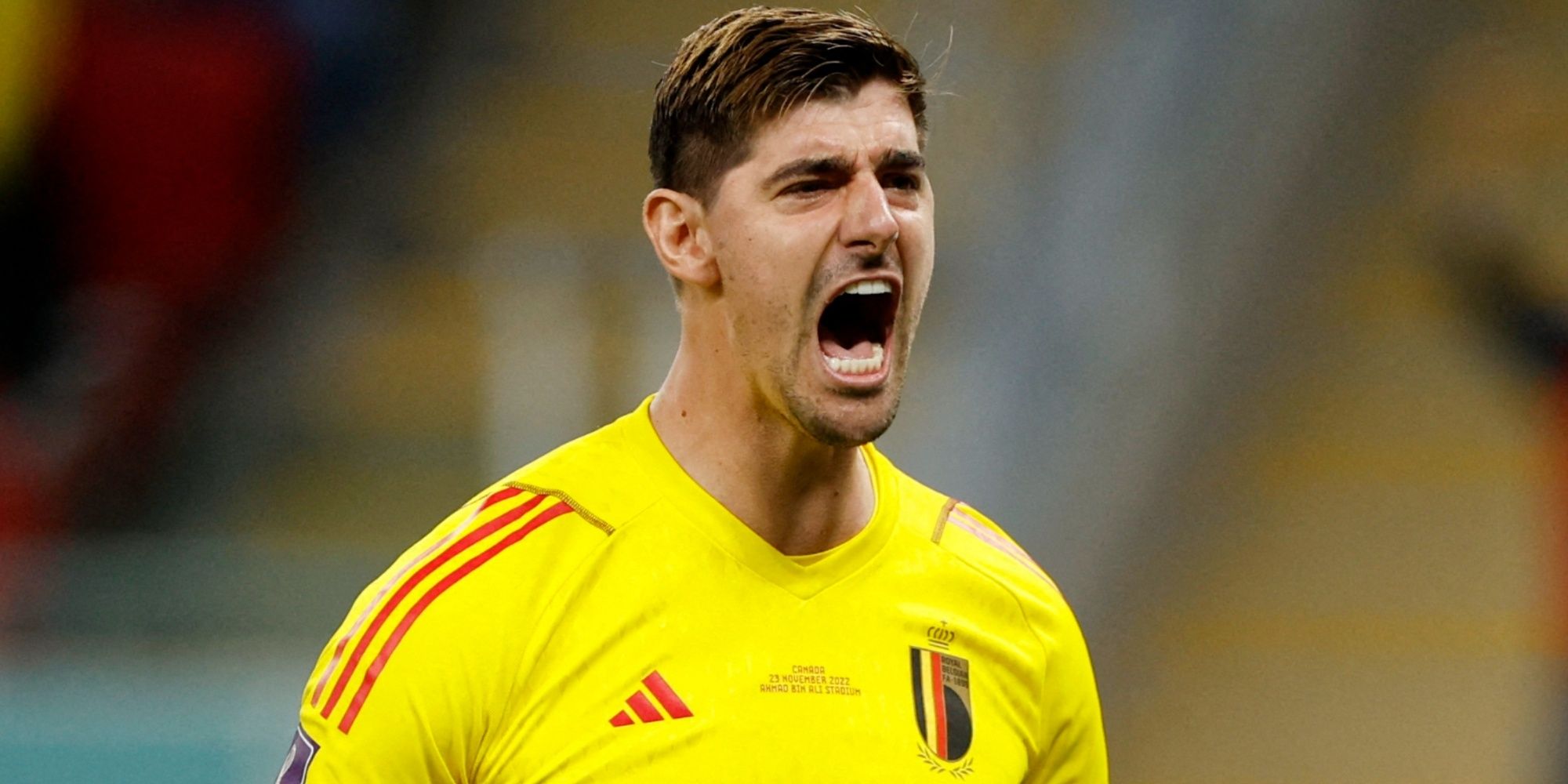
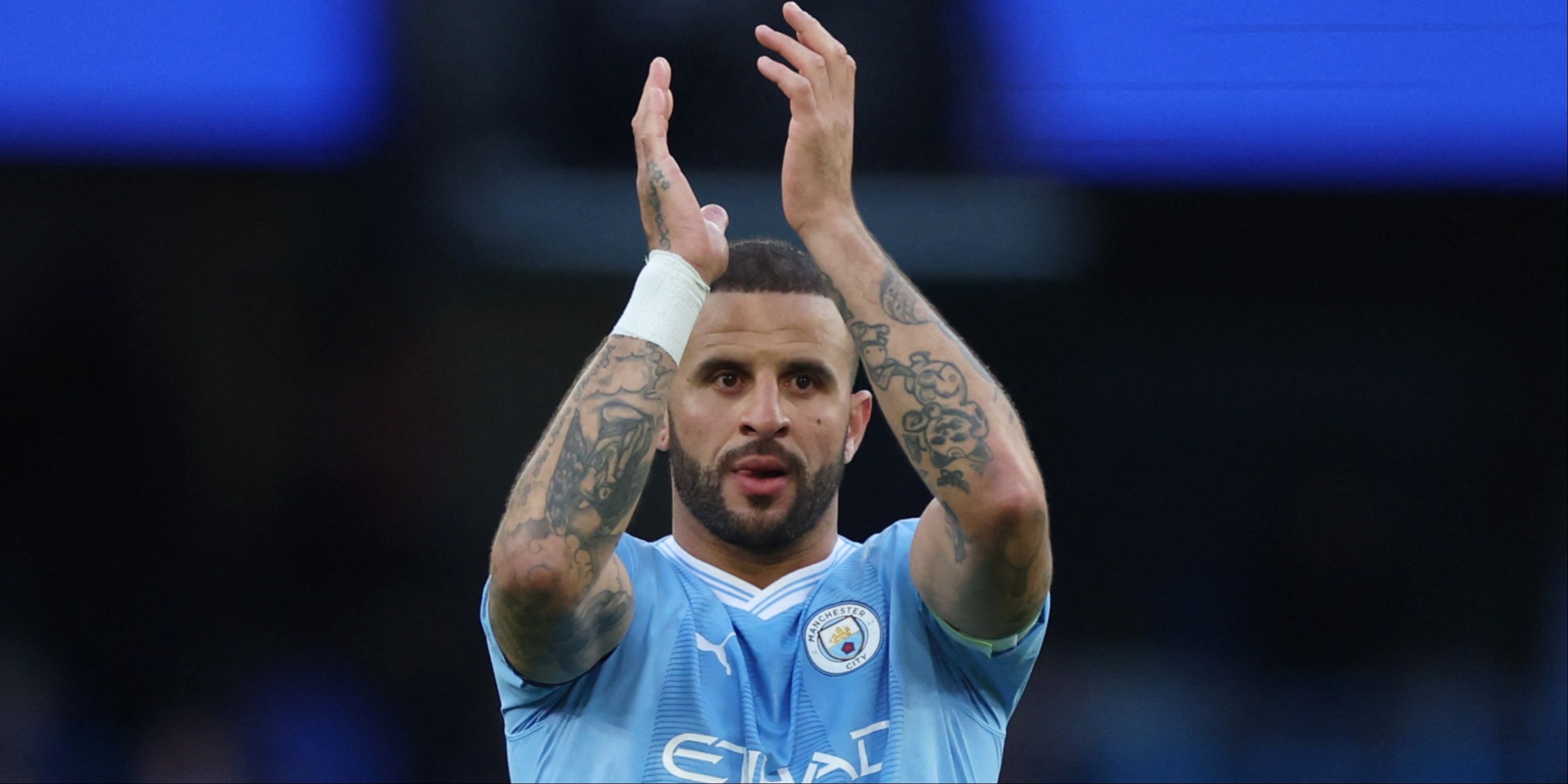
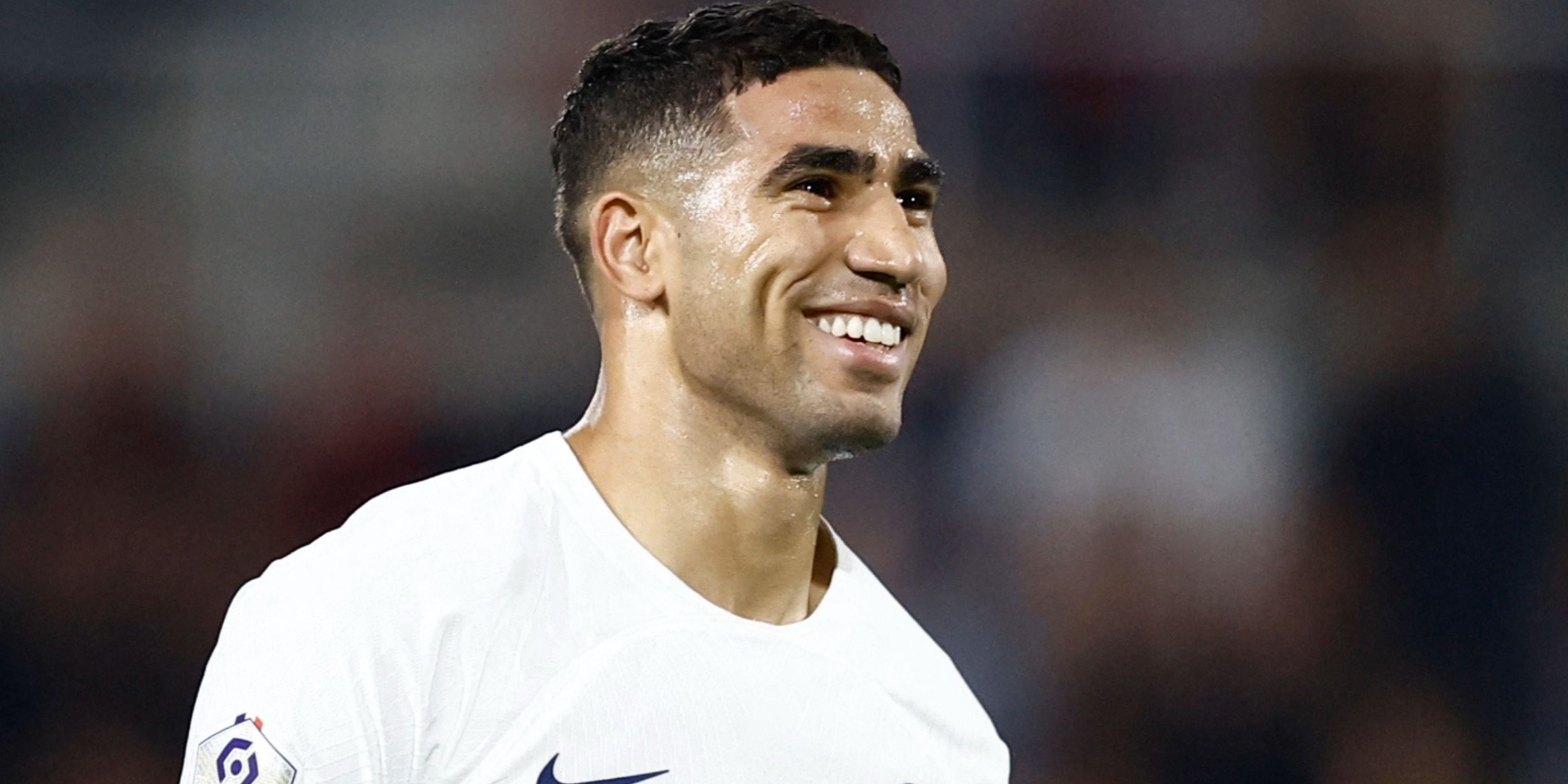
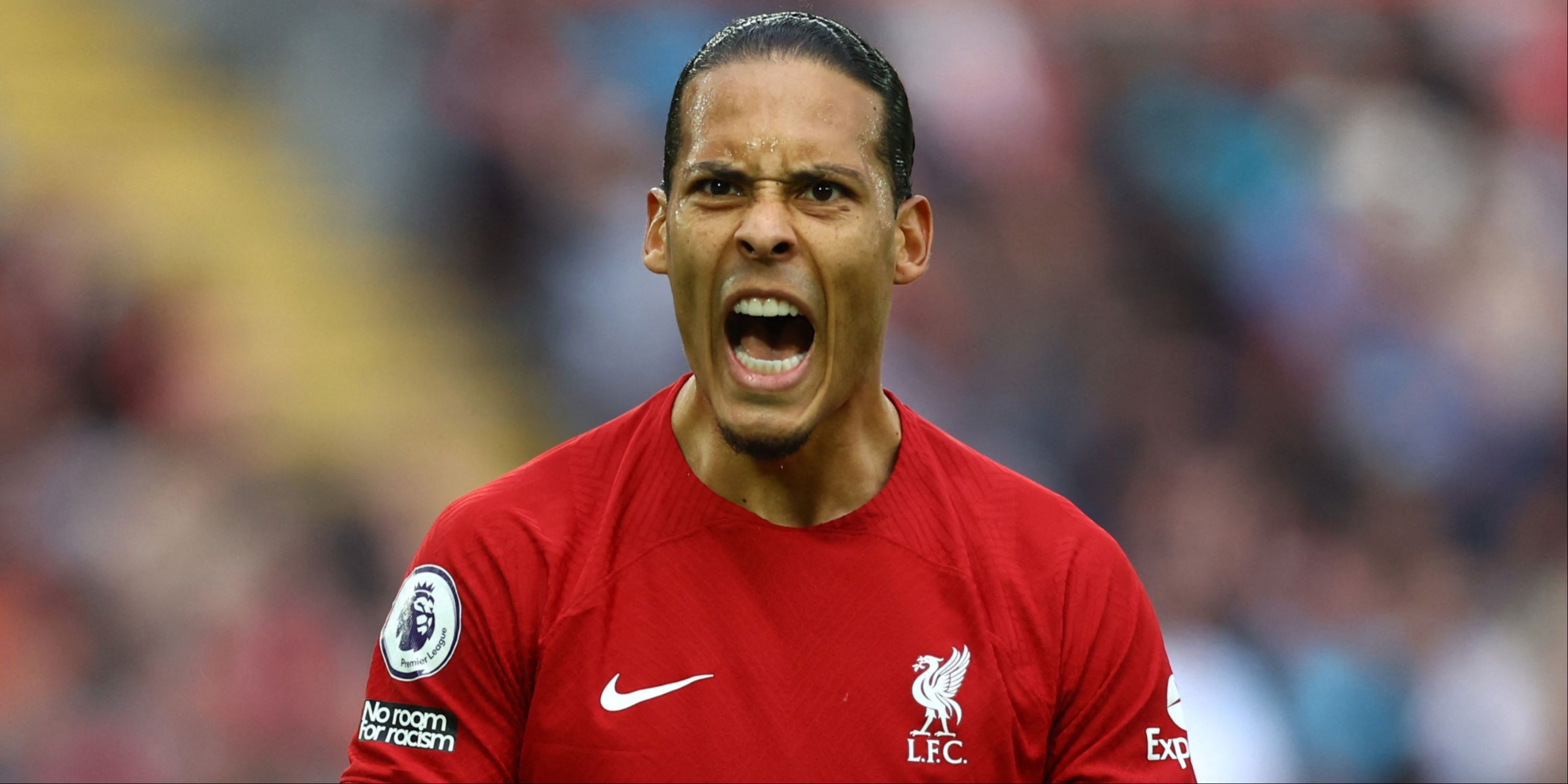
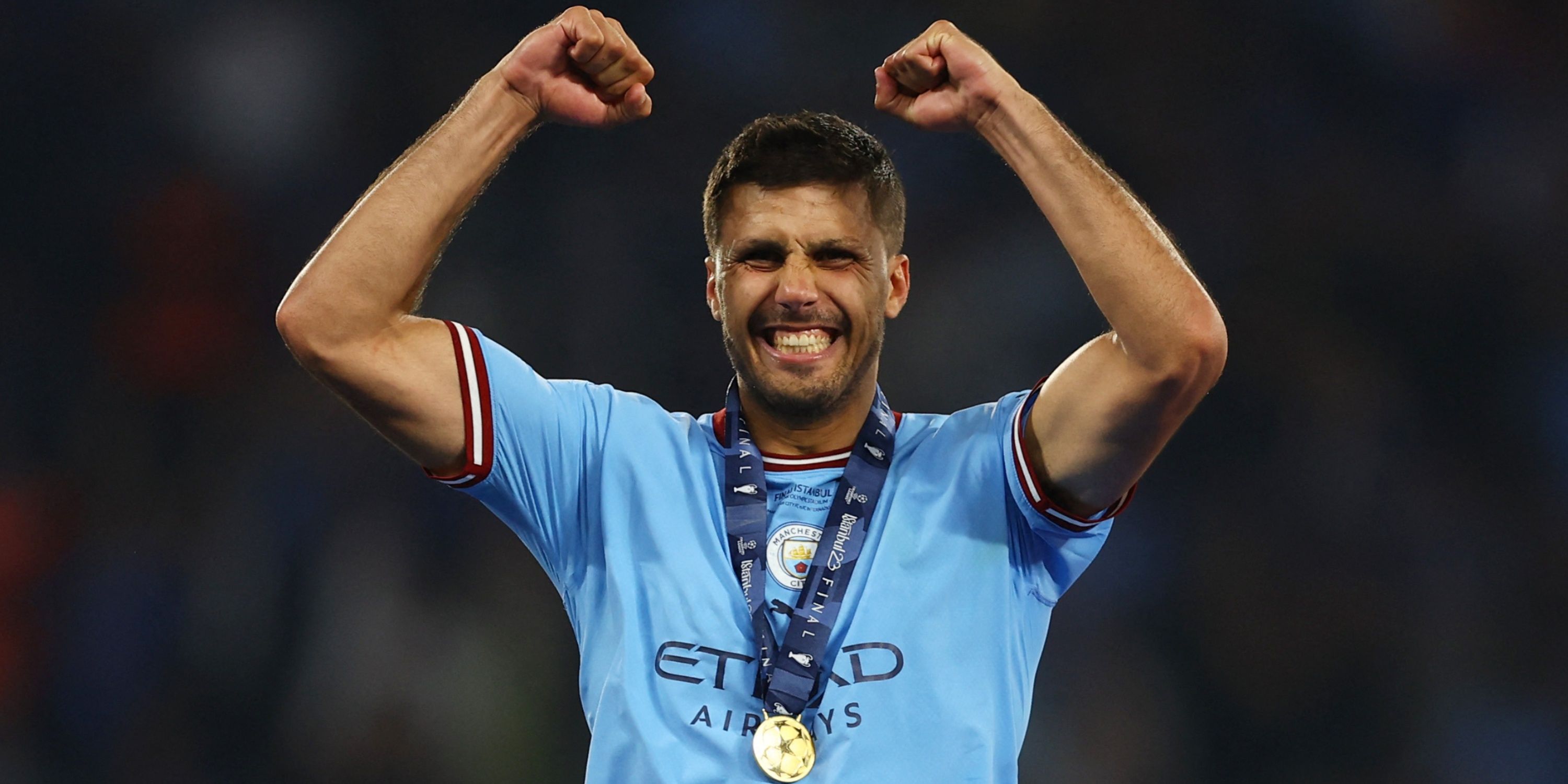
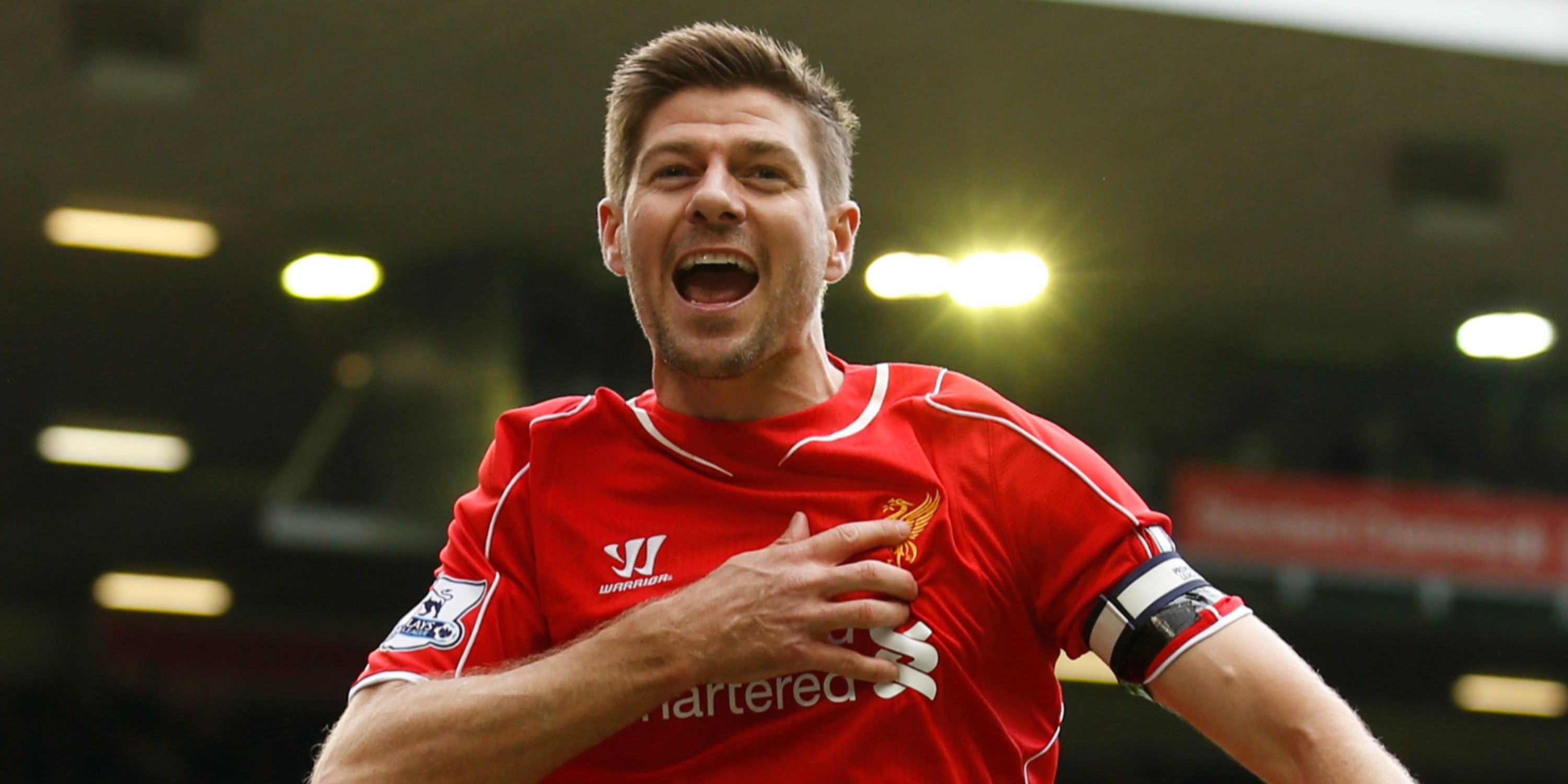
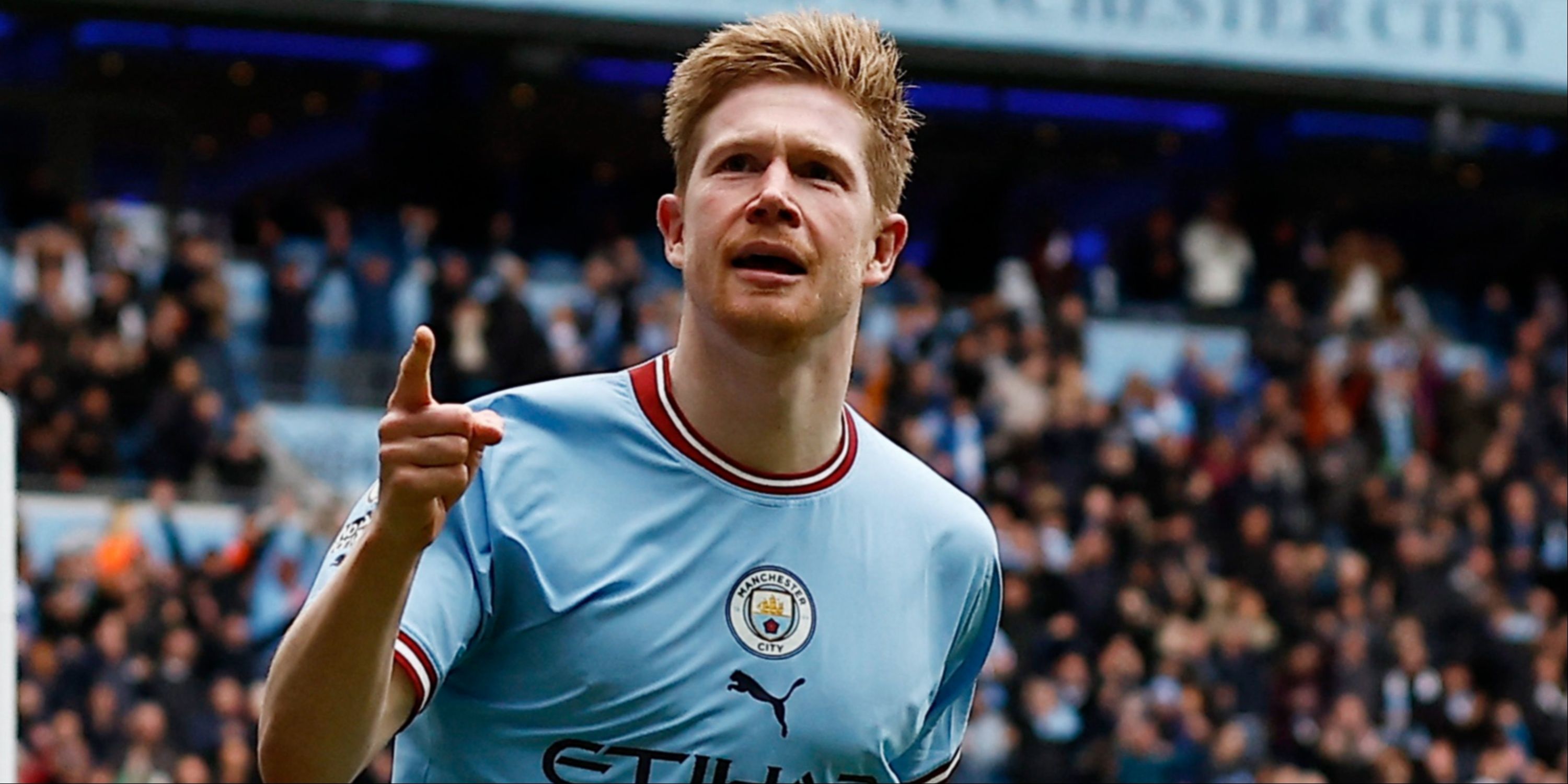
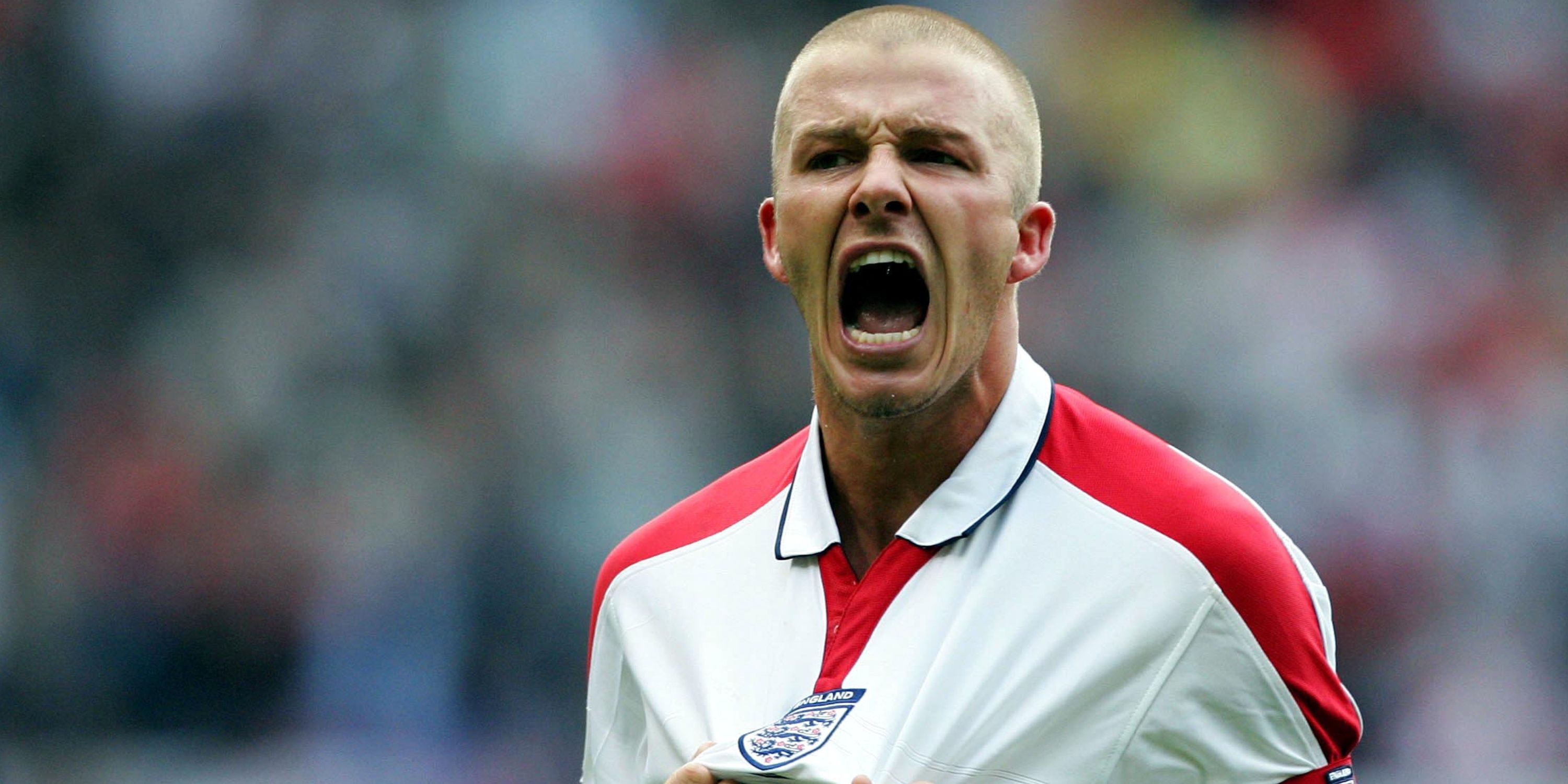
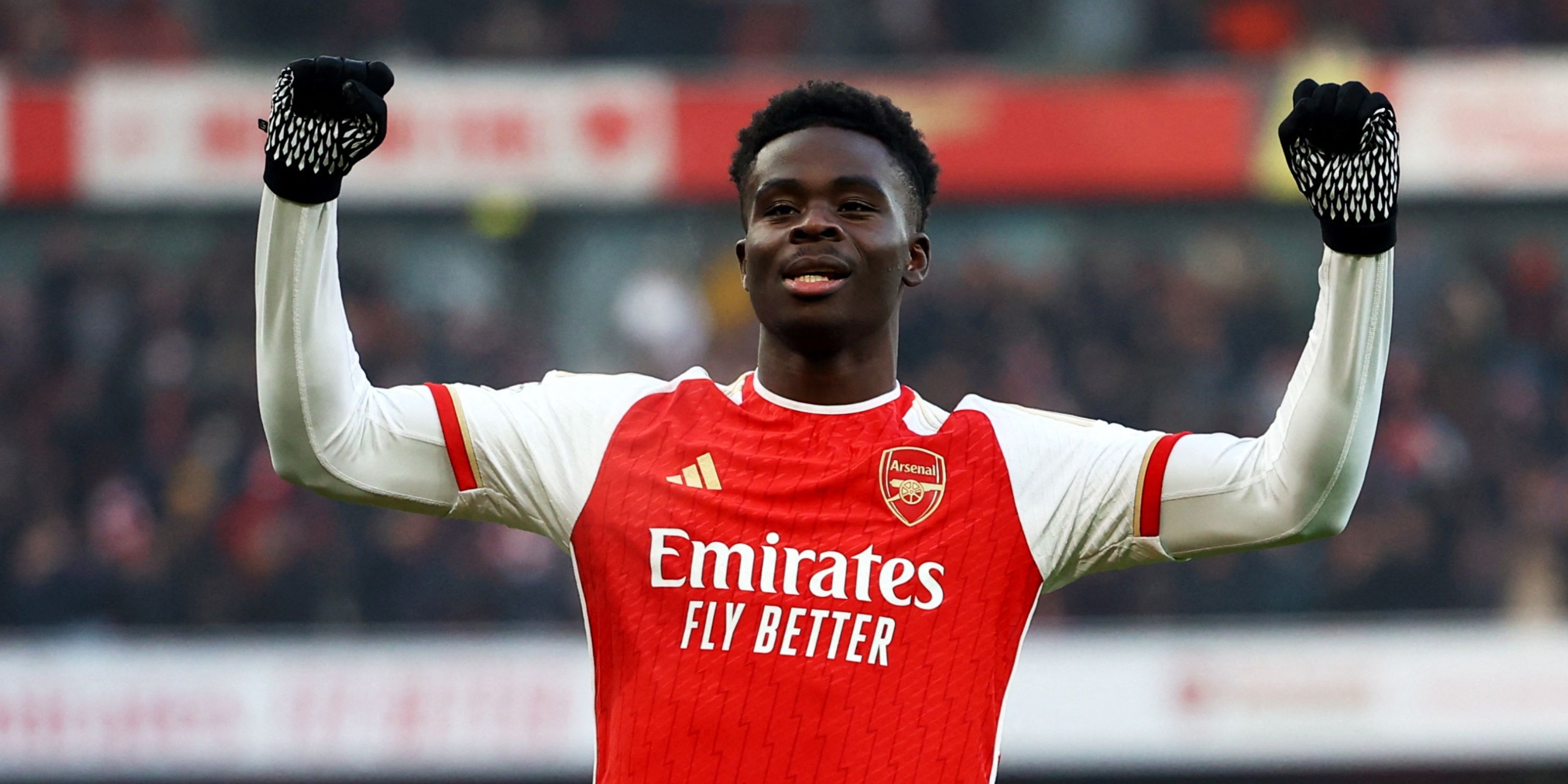
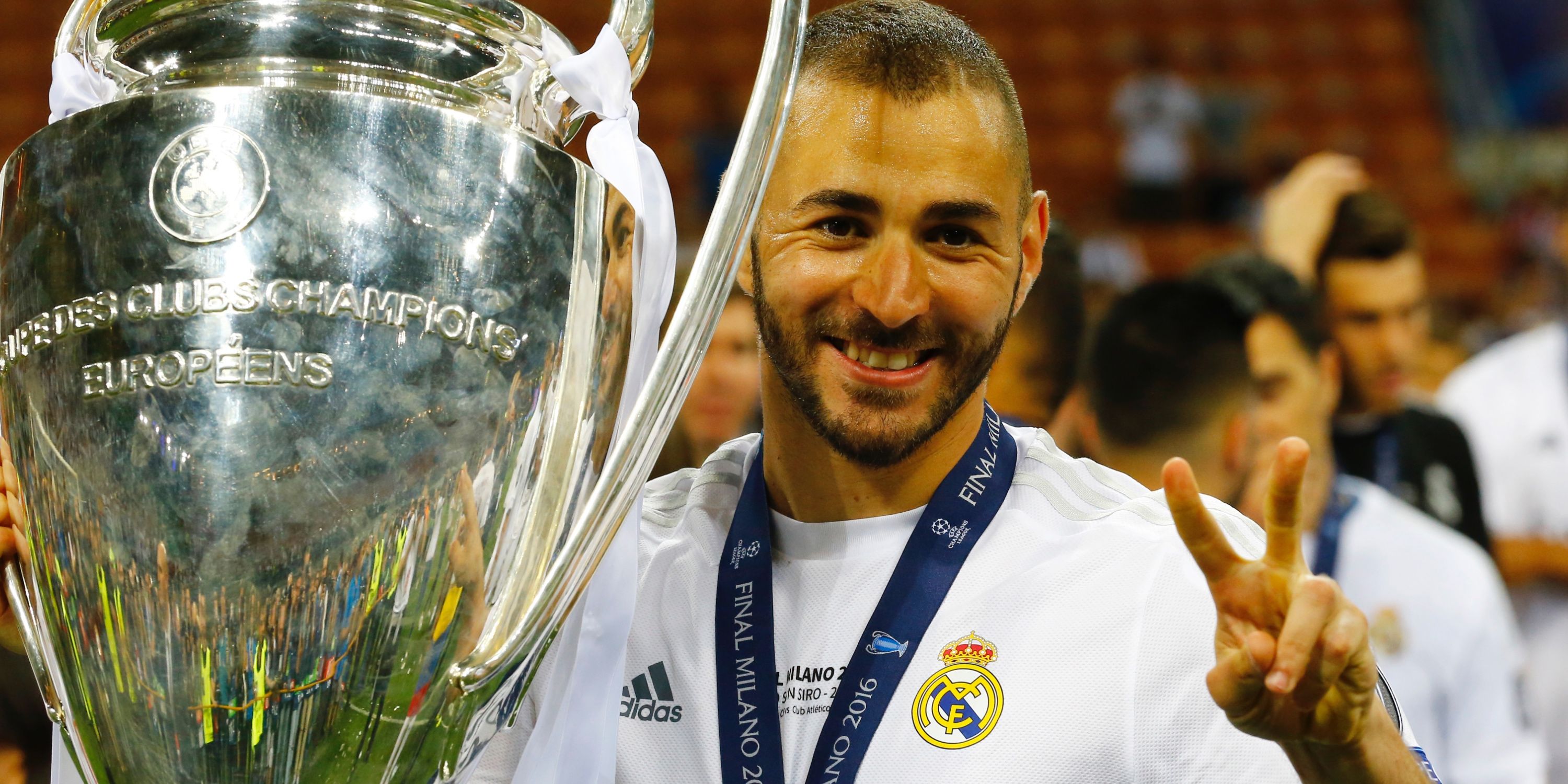
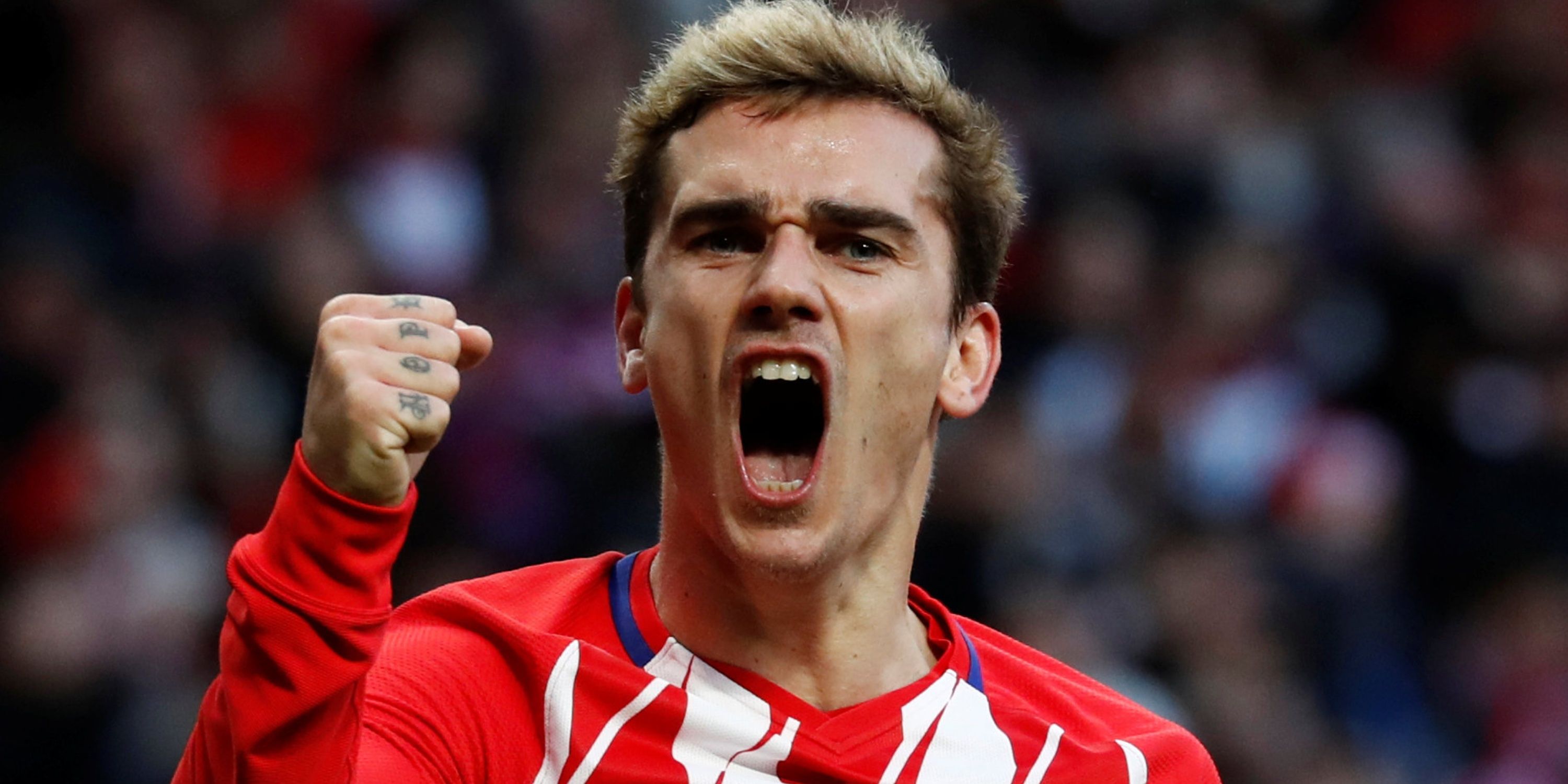
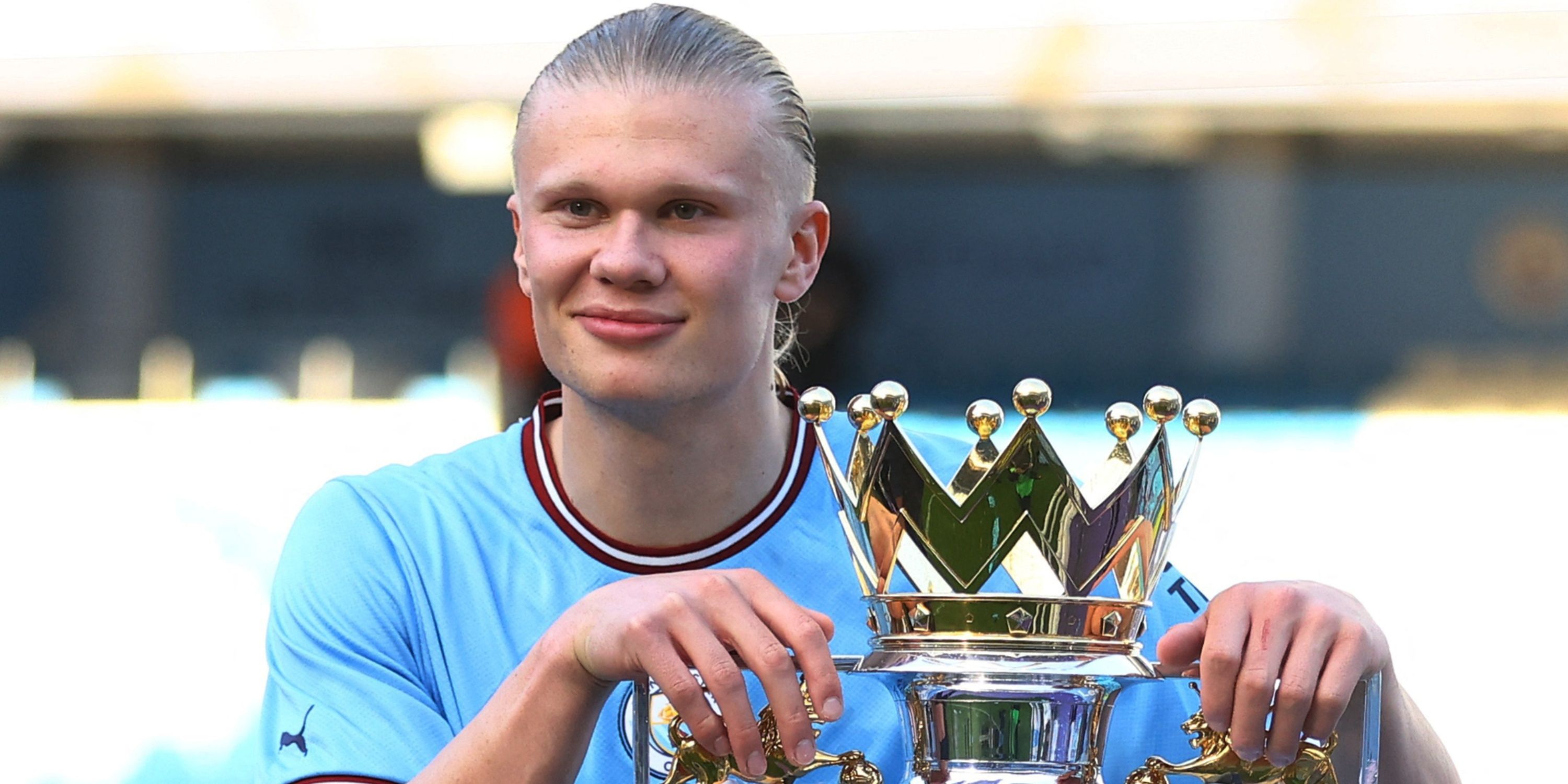
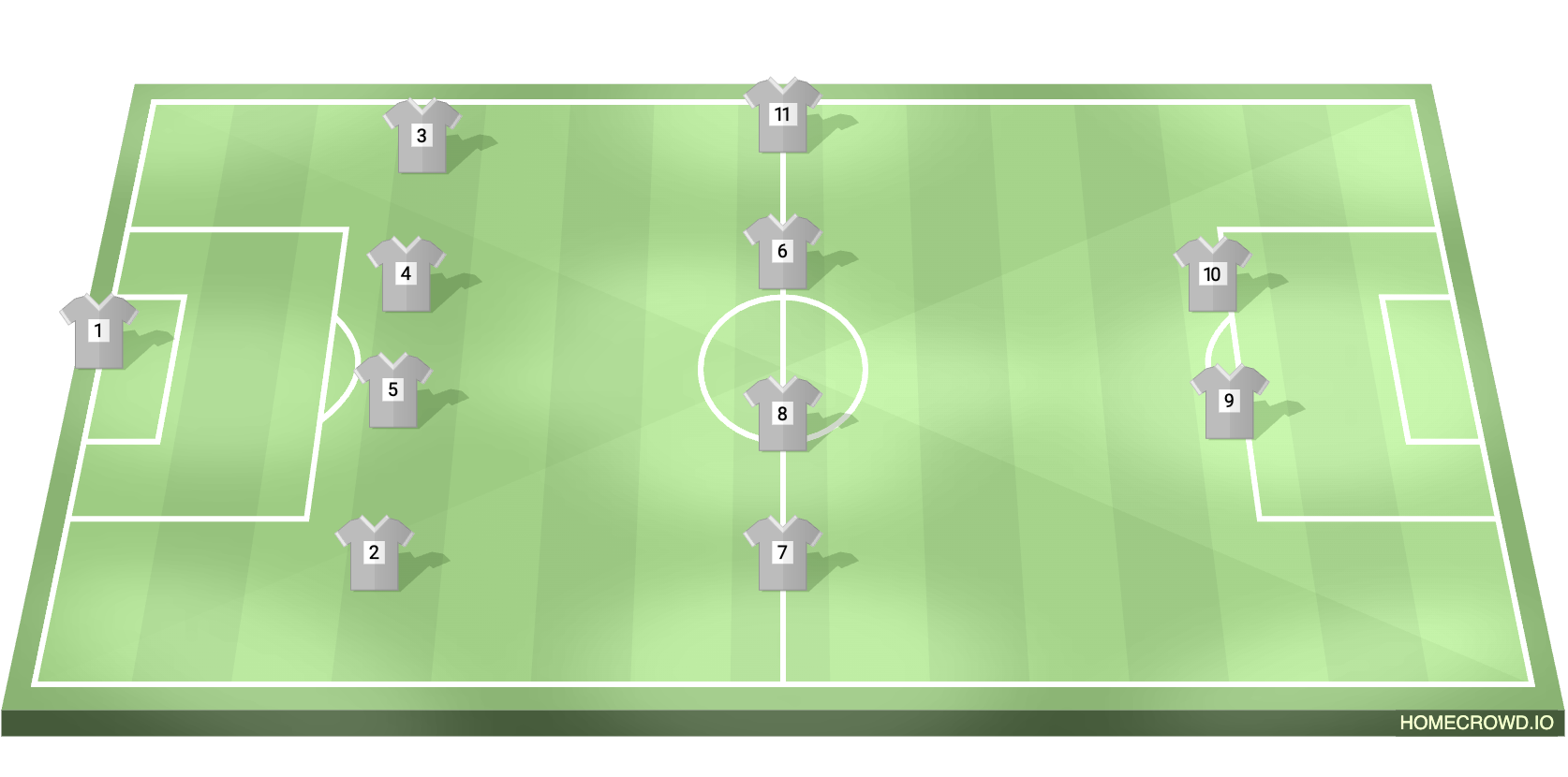
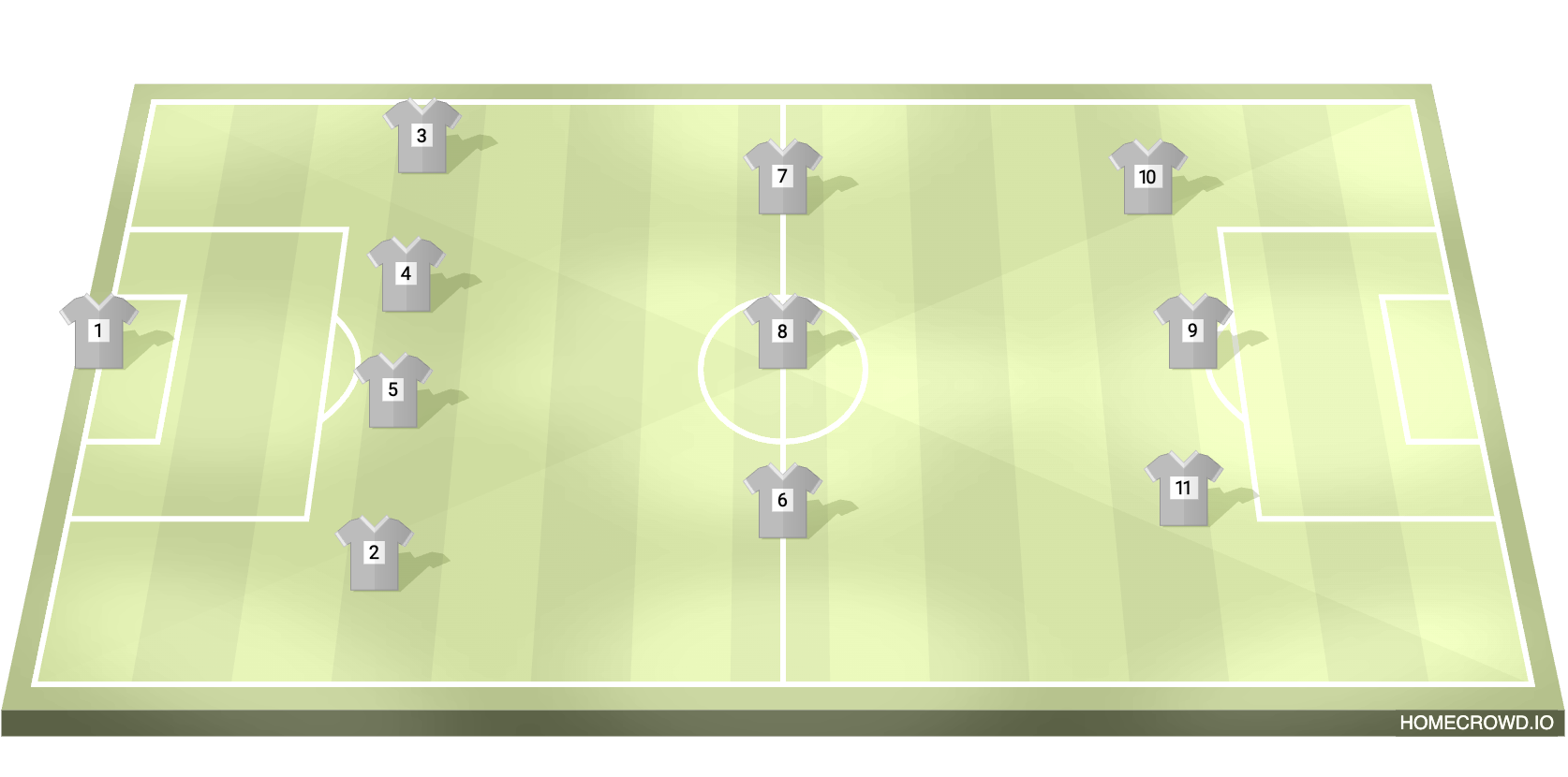
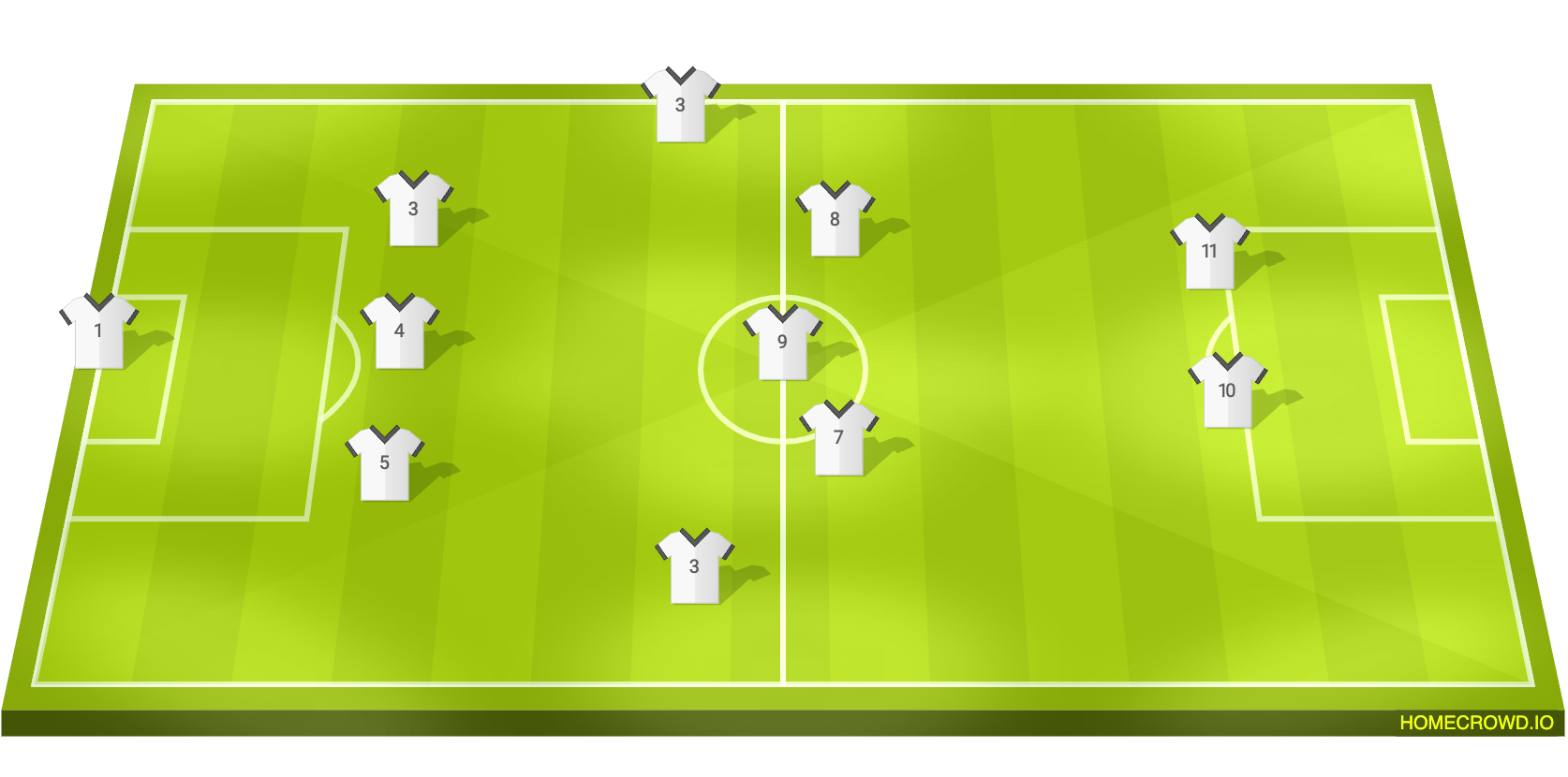
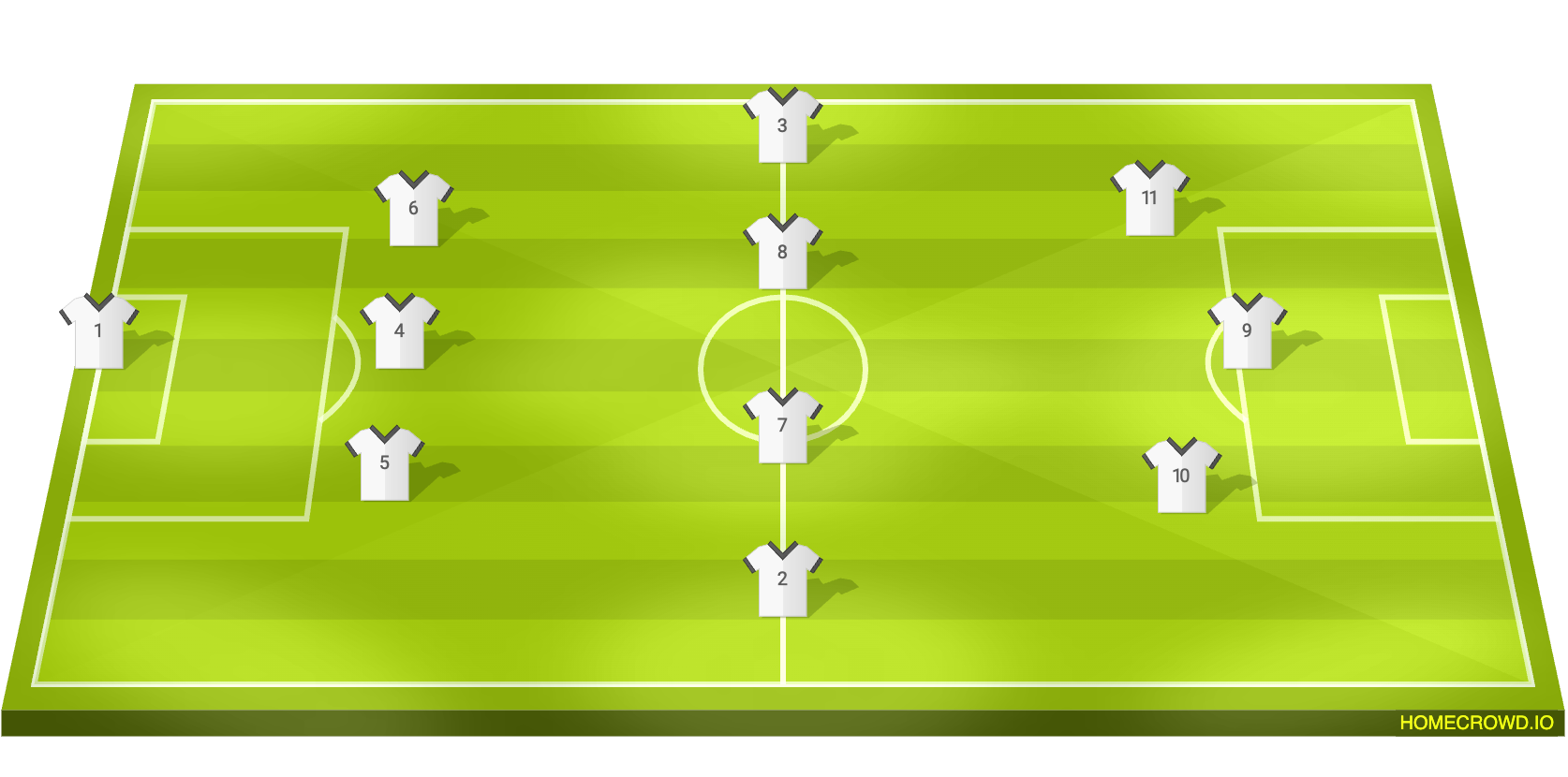
Leave a Reply